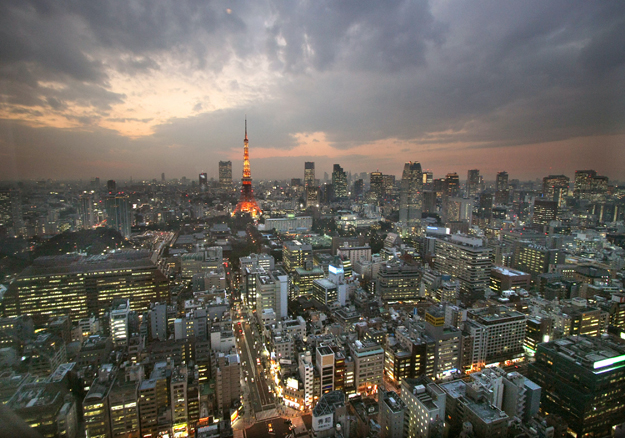By the year 2025 we will have finally come to grasp that in virtually every human endeavor, density pays.
Silicon Valley has known this since Gordon Moore coined his eponymous law nearly half a century ago, predicting the exponentially increasing density and decreasing price of the processing power crammed onto microchips — a dynamic that has turned young adults into billionaires with regularity ever since. But as everyone from Paul Krugman (whose Nobel-winning research pointed out the trade benefits of geographic concentration) to contemporary French chefs (who artfully condense the essence of a stick of butter into ever smaller morsels) to condo developers (no explanation necessary) has learned, density pays in the physical world as well. As the World Bank observed in its 2009 World Development Report, half the world’s GDP is produced on 1.5 percent of its land surface. Humanity’s global migration toward ever denser urban living has added trillions of dollars to the global GDP every decade since at least the end of World War II.
Global markets have followed a similar trajectory toward ever greater concentration. The Bank for International Settlements reports that the international derivatives market has grown to $600 trillion from just under $100 trillion a decade ago, whereas the world’s economic output approximately doubled over the same period. The 10 largest banks in the United States now hold $11 trillion of the country’s total $13 trillion in banking assets; the assets of the top five French banks equal 325 percent of France’s GDP. Too big to fail? Not unless you want to render your financial centers impotent.
But density has consequences. Cramming more than half the world’s population and production onto a relatively small area of mostly coastal land means that the cost of natural catastrophes of all kinds will rise dramatically. This year’s earthquake in Japan, which caused more than $300 billion in economic damage, was just a preview; a decade and a half from now, a single hurricane or earthquake will come with a potential price tag of $1 trillion or more. Imagine a world in which economic damage equivalent to that caused by a major war or the detonation of a midsized nuclear weapon in a major city could materialize with a warning of only a few days (in the case of a hurricane) or just one second (an earthquake).
We can look forward to bigger and more frequent financial catastrophes as well. Think of equity capital as land, industry segment as location, and financial risk as density. Concentrating all of these means greater productivity, but it also means that we are inviting ever more catastrophic financial hurricanes. How could the defaulted home loan of a strawberry picker in California wipe out $16 trillion in global financial market value and put so many people out of a job? You might as well ask how O’Leary’s cow, kicking over a lantern in a barn on DeKoven Street, could have caused the Great Chicago Fire of 1871.
The world’s exponentially increasing density of, and dependence on, information technology poses similar risks. Consider the “flash crash” of May 6, 2010, in which a perfect storm of faster-than-you-can-think trading algorithms, a large but ill-timed electronic sell order, and a market with a bad case of the nerves caused the Dow Jones industrial average to plunge 700 points in a little over 10 minutes — at one moment achieving the largest single-day decline in the Dow’s history — only to recover within minutes. Or think of April’s failure of the massive Amazon “cloud” (a popular and widely used server platform), which knocked everyone from tech start-ups to U.S. Energy Department researchers offline for several days. In both cases, you do not have to be a network administrator to know that while information technology is watching over us, it is not clear who is watching over information technology. Are we putting the global economy’s trillions of eggs in the largest electronic basket ever constructed?
Recognizing the importance of the density dynamic is essential not only to harnessing its benefits but also to managing its costs — and they can be managed. Technology made megacities possible, while at the same time making catastrophic citywide fires a thing of the past. Now that we are building megacities of financial risk, we need to put the equivalent of new building practices and fire codes in place to keep an ill-timed and poorly placed financial fire from burning down a third of the metropolis. Hedge funds complain about “crowded trades”: too many investors and speculators buying the same stocks, bonds, or commodities, thus increasing the risk of market crashes should investors panic and sell the same things at the same time. But where is there a sign in financial markets that says “Occupancy of This Trading Position by More Than 140 Hedge Funds and Banks Is Dangerous and Unlawful”?
Learning to live with the risks of density requires recognizing that density is here to stay — and that’s a good thing. People generally tend to see density as a problem, as anyone who’s ever spent hours in traffic in Lagos or Jakarta can attest. But if density were only about crowded megacities, with their tiny, expensive apartments and horrific traffic, they surely would have splintered apart long ago. Instead, these megalopolises keep getting bigger and denser — and though costs of living climb ever higher, there’s no mass exodus for the countryside. Similarly, the largest banks and information networks may be too big to fail, but their size is too central to the growth of our economies to break them apart. Our visceral uneasiness with this state of affairs means that for many years to come, we will continue to think of density as a side effect of progress, rather than a fundamental driver of it. It may be decades before the rest of us learn what the microchip business learned in the 1960s: that the future is a crowded place, and we’ll all be better for it.
